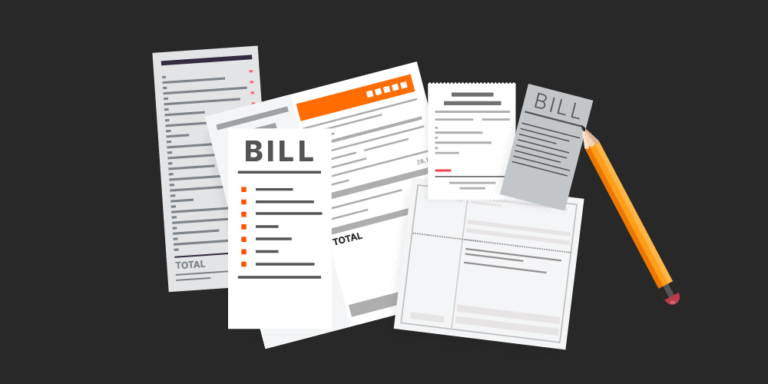— 11 min read
Overbilling in Construction: Understanding Billing in Excess of Costs


Last Updated Jun 11, 2024

Kelsie Keleher
Senior Strategic Product Consultant, General Contractors
13 articles
Kelsie is a Senior Strategic Product Consultant for general contractors at Procore; working closely with civil and infrastructure clients. Kelsie holds a Masters of Business Administration (MBA) and has close to a decade of experience in construction accounting and finance.

Taylor Riso
Contributing Writer
91 articles
Taylor Riso is a marketing professional with more than 10 years of experience in the construction industry. Skilled in content development and marketing strategies, she leverages her diverse experience to help professionals in the built environment. She currently resides in Portland, Oregon.
Last Updated Jun 11, 2024

The financial stability of construction firms often hinges on effectively managing the timing between incurring costs and receiving payments. This delay can significantly strain a company's financial resources, emphasizing the importance of competent cash flow management.
A critical aspect of this is the practice of overbilling, also commonly known as billings in excess of costs, where the amount billed to clients exceeds the costs incurred at a given time. This practice, while being a strategic financial approach, requires rigorous oversight to prevent potential fiscal imbalances and preserve client trust.
This article provides an in-depth look at billings in excess of costs: Its implications, the circumstances that lead to its occurrence and strategies contractors can employ to navigate this practice successfully.
Table of contents
Overbilling: An Overview
Billings in excess of costs — often termed overbilling — is a situation in which the amount invoiced to a client or project owner surpasses the actual costs for work completed up to that point. More than an accounting term, overbilling operates as a strategic financial tool that can significantly influence cash flow and the broader fiscal health of construction projects.
The practice is closely associated with the percentage of completion accounting method. This method ties revenue and expense recognition to the level of project completion, which may result in billings that exceed the costs incurred at particular phases of a project. This alignment with the project's percentage completion, instead of basing it solely on expenses incurred, can improve cash flow management.
Effective management of billings in excess of costs entails making work-in-progress adjustments to ensure that revenue reported on financial statements accurately mirrors actual project progress. These adjustments typically result in reducing recognized revenue, thereby ensuring it matches the real rate of completion. Such accurate adjustments are necessary for construction firms to uphold the accuracy of financial reporting, prevent revenue overstatement, and offer a realistic view of a project’s financial status.
By accurately adjusting for billings in excess of costs, construction firms can maintain the integrity of financial reporting, prevent the overstatement of revenue, and provide a true representation of a project's financial health, helping to avoid potential misinterpretations of a project's progress and profitability.
While discussing billings in excess of costs, it's crucial to differentiate this practice from “overcharging” or fraudulently billing clients, which involves charging more than the agreed-upon contractual price and constitutes unethical and illegal conduct.
Calculating Billings in Excess of Costs
Understanding and calculating billings in excess of costs is helpful for accurate financial management in construction projects. This process involves several steps:
1. Start with your cost estimate.
Before a project begins, establish a total cost estimate — the anticipated total expense required to complete the project.
2. Determine percent complete.
Calculate the percent complete of the project by dividing the total cost incurred to date by the total cost estimate.
Total Cost Incurred to Date / Total Cost Estimate = Percent Complete
3. Calculate earned revenue.
Apply the percent complete to the total contract amount (also known as the revenue amount) to determine the earned revenue. This represents the revenue that should be recognized based on the work completed.
Percent Complete x Total Contract Amount = Earned Revenue
4. Determine Billings in Excess of Cost.
Finally, to find out if there are any billings in excess of costs (or costs in excess of billing), subtract the earned revenue from the total amount billed to the client.
Total Billings - Earned Revenue = Billings in Excess of Costs
Common Causes of Billings in Excess of Costs
Billings in excess of costs can arise due to a variety of practices and situations. Understanding these causes is crucial for overall effective financial and project management and maintaining ethical standards. Here are some of the common causes that may result in billings in excess of costs.
Advance Billing
Advance billing is where construction firms bill clients for expected costs before these costs have actually been incurred. This is most common with mobilization costs, which are typically incurred at the project's outset for tasks such as transporting equipment and setting up the jobsite. These costs are typically considerable, and in many instances, they are covered upfront by the owner, alleviating the need for the contractor to bear these expenses entirely out-of-pocket. This approach to billing is a crucial method for managing cash flow, yet it can lead to a scenario where the amount billed outpaces the actual costs at certain project stages.
Additionally, initial deposits received at the start of a project can contribute to billings in excess of costs. These deposits — often a significant chunk of the project's total value — are received before any substantial work is completed. While they provide upfront cash, they do not directly correspond to the work done at that early stage, increasing the gap between billings and actual costs.
Unrecognized Cost Savings
A common cause of billings in excess of costs can be attributed to unrecognized cost savings during a project. This situation arises when the actual costs turn out to be lower than the initially estimated costs, but this reduction isn't immediately reflected in the financial statements or billing schedule.
Take, for instance, a project involving the installation of 100 linear feet of pipe. The original estimate was $75 per foot, resulting in a total estimated cost of $7,500. However, through efficient management, the actual cost was reduced to $65 per foot, totaling $6,500. Despite this cost saving, if the contractor billed the client based on the original estimate before adjusting for the actual costs, leading to billings in excess of costs.
In this example, at the project's completion, the actual cost reflected a completion rate of 87% of the estimated cost, not the billed 100%, thereby creating an overbilling scenario of $1,067. To rectify this, the contractor would need to adjust the estimated cost in the financial schedule to match the actual cost, thereby aligning the completion rate with the actual cost incurred. This adjustment isn't just a matter of changing figures; it requires noting the reasons behind the cost savings — in this case, a $10 per foot reduction in costs — and accurately reflecting these savings in the financial statements.
This ensures financial accuracy and demonstrates the importance of continuous monitoring and management of project costs to avoid unintentional overbilling.
Billing for Unapproved Work
Billing for work not covered by an approved change order is a notable cause of overbilling in construction projects. This happens when contractors invoice for additional work or modifications that haven't been officially authorized and included in the current contract. For example, if a contractor anticipates a project scope change and bills for it before obtaining an approved change order, the invoiced amount exceeds what's stipulated in the original contract, leading to overbilling.
This practice introduces risk as it creates financial discrepancies between the work done and the work agreed upon in the contract. It's best practice for contractors to ensure that any additional or altered work is formally approved and documented in a change order before beginning that work or billing for it. This not only aligns the billing with the contractual agreement but also upholds transparency and trust in client relationships, reducing the risk of disputes and financial mismatches.
Missing Accounting Accruals
Another cause of billings in excess of costs arises from unrecorded accruals. This typically happens when general contractors bill the client for work done by subcontractors before the costs of that work are formally recorded, usually due to a delay in processing the subcontractors' invoices.
When these costs remain unrecorded, the amount invoiced to the client may surpass the costs actually entered into the financial system. Such a situation leads to billings in excess of costs, as the billed amount exceeds the documented expenses. To avoid this, contractors should ensure that all incurred costs, especially those from subcontractors, are accurately recorded in their accounting systems as soon as the work is completed. Properly accruing these costs before billing is key to reflecting the true financial state of the project and preventing overbilling.
Artificially High-Cost Estimates
In the early stages of a construction project, billings in excess of costs can also stem from artificially high cost estimates. Often, initial project estimates are set higher as a conservative measure to account for potential unforeseen expenses. Such overestimation, particularly common at the project's outset, results in charging clients more than the current progress justifies. Through regular review and adjustment of their cost estimates to reflect the actual project progression and expenses, contractors ensure that billings are always aligned with the real-time costs.
High Margin in Specific Line Items
Billings in excess of costs can also occur when specific line items in cost estimates are assigned a disproportionately high margin. For instance, it's common for contractors to bill for half of the mobilization costs at the start of a contract and the other half at the end. If the mobilization cost includes a high margin compared to other project elements, this can result in initial billings that are much higher than the actual costs incurred at that early stage. This creates a scenario where there's a billing in excess of costs, lasting until the project progresses further and the overall budget margins are more evenly distributed among all line items.
Understanding these triggers is essential for construction firms to manage their billing practices responsibly and avoid potential financial and legal pitfalls. It’s not only about maintaining cash flow but also about ensuring accuracy and integrity in financial reporting and client relationships.
Stay updated on what’s happening in construction.
Subscribe to Blueprint, Procore’s free construction newsletter, to get content from industry experts delivered straight to your inbox.

Tips for Keeping Construction Financials in Order
Managing construction project finances requires a proactive and diligent approach, especially when dealing with billings in excess of costs. Here are some effective tips for maintaining financial order and managing overbilling:
1. Review accruals (at least) monthly.
Regularly update your financial records by reviewing and adjusting accruals each month. This ensures all costs, particularly those from subcontracted work, are accurately reflected in your financial statements.
2. Keep change orders up-to-date.
Ensure any approved changes in project scope, costs, or schedule are promptly documented. By keeping change orders up-to-date, you can ensure that all billed work aligns with the agreed contract, reducing the risk of billings in excess of costs.
3. Create a standardized procedure for dealing with change orders.
Establish clear and standardized procedures for how and when a change order affects your cost estimate and the current contract amount. Consistency in these processes can help to prevent financial discrepancies.
4. Substantiate all overbilling.
Regularly analyze any presumed cost savings to verify their accuracy and completeness. This practice helps substantiate cases of billings in excess of costs and ensures they are justifiable and reflect actual project changes.
5. Avoid recognizing evaluated cost savings too early.
Be cautious about acknowledging cost savings in the early stages of a project. Establish clear guidelines for adjusting project estimates when cost savings arise— for example, consider making revisions only after 50% of the total budgeted cost has been incurred or when half of the project's scheduled duration has passed. Such measures help minimize the risk of financial misrepresentation that can arise from premature adjustments to project estimates.
6. Remember the conservatism principle.
In financial reporting and construction accounting, it is key to practice conservatism. Recognize expenses and liabilities as soon as possible, but only record income and assets when they are assured. This principle helps in presenting a financial situation that is not overly optimistic and more aligned with reality.
Weighing the Benefits and Risks of Billings in Excess of Costs
Managing billings in excess of costs is complex, and its implications can vary significantly based on context. Potential advantages include improved cash flow, enabling a firm to manage project costs effectively. However, there are risks involved, such as the possibility of financial misrepresentation and the breach of contractual terms that can lead to disputes and loss of trust with clients.
Improved Cash Flow Management
One of the primary advantages of billings in excess of costs is an improved cash position. By billing more than the costs incurred to date, a construction firm secures a steady stream of working capital. This can be especially beneficial in managing the upfront costs and ongoing expenses of a project before substantial payments from the client are received.
Potential Financial Misinterpretation
While billing in excess of costs might indicate a gain in profit margin, it can also mask missing expenses. This could lead to a misrepresentation of the project's financial health, where the profitability appears higher than it actually is. If not monitored closely, this can lead to budgeting and financial planning issues later on in the project.
Risk of Contractual Breach
Overbilling runs the risk of breaching contract terms with clients. Many contracts stipulate specific billing schedules and terms based on project milestones, percentage complete or actual costs incurred. Billing in excess of these agreed terms, even inadvertently, can lead to disputes, legal challenges, and a loss of trust, potentially harming long-term business relationships.
The Balance of Managing Overbilling
Managing billings in excess of costs is a balancing act. On one hand, it provides an effective tool for managing the cash needs of a project, ensuring there is enough capital to keep the project moving forward smoothly. On the other hand, it necessitates meticulous accounting practices and a deep understanding of the processes to prevent financial inaccuracies or contractual issues. Contractors need to tread cautiously to align their billing practices with both their financial management needs and the contractual obligations to their clients.
Was this article helpful?
Thank you for your submission.
100%
0%
You voted that this article was . Was this a mistake? If so, change your vote
Scroll less, learn more about construction.
Subscribe to The Blueprint, Procore’s construction newsletter, to get content from industry experts delivered straight to your inbox.
By clicking this button, you agree to our Privacy Notice and Terms of Service.
Thank you!
You’re signed up to receive The Blueprint newsletter from Procore. You can unsubscribe at any time.
Categories:
Written by

Kelsie Keleher
Senior Strategic Product Consultant, General Contractors | Procore
13 articles
Kelsie is a Senior Strategic Product Consultant for general contractors at Procore; working closely with civil and infrastructure clients. Kelsie holds a Masters of Business Administration (MBA) and has close to a decade of experience in construction accounting and finance.
View profile
Taylor Riso
Contributing Writer
91 articles
Taylor Riso is a marketing professional with more than 10 years of experience in the construction industry. Skilled in content development and marketing strategies, she leverages her diverse experience to help professionals in the built environment. She currently resides in Portland, Oregon.
View profileExplore more helpful resources

Construction Accounting Software: Key Features and What To Look For
Commercial contractors manage large and complicated budgets that can have slow payment rates and volatile costs. They also have to accurately allocate job costs based on specific factors such as...

Construction Collaboration: Navigating the Intersection of Project Management and Accounting
Accounting and project teams work together to move the financial aspects of projects through to completion. Data sharing allows for concurrent review to make this possible. Teams need to share...

What are Committed Costs in Construction Accounting?
In construction projects, managing finances can be a challenging task — but understanding committed costs can simplify the process. Committed costs refer to expenses that are guaranteed through formal agreements,...

Understanding Construction Financial Statements
For construction firms, effectively managing financial statements is an important building block for success. These documents play a key role in tracking performance, maintaining financial health and securing future projects....
Free Tools
Calculators
Use our calculators to estimate the cost of construction materials for your next project.
Templates
Find a template to help you with your construction project tasks.
Material Price Tracker
Get the latest U.S. retail prices and view historical trends for common building materials.
Glossary
Explore key terms and phrases used in the industry.
